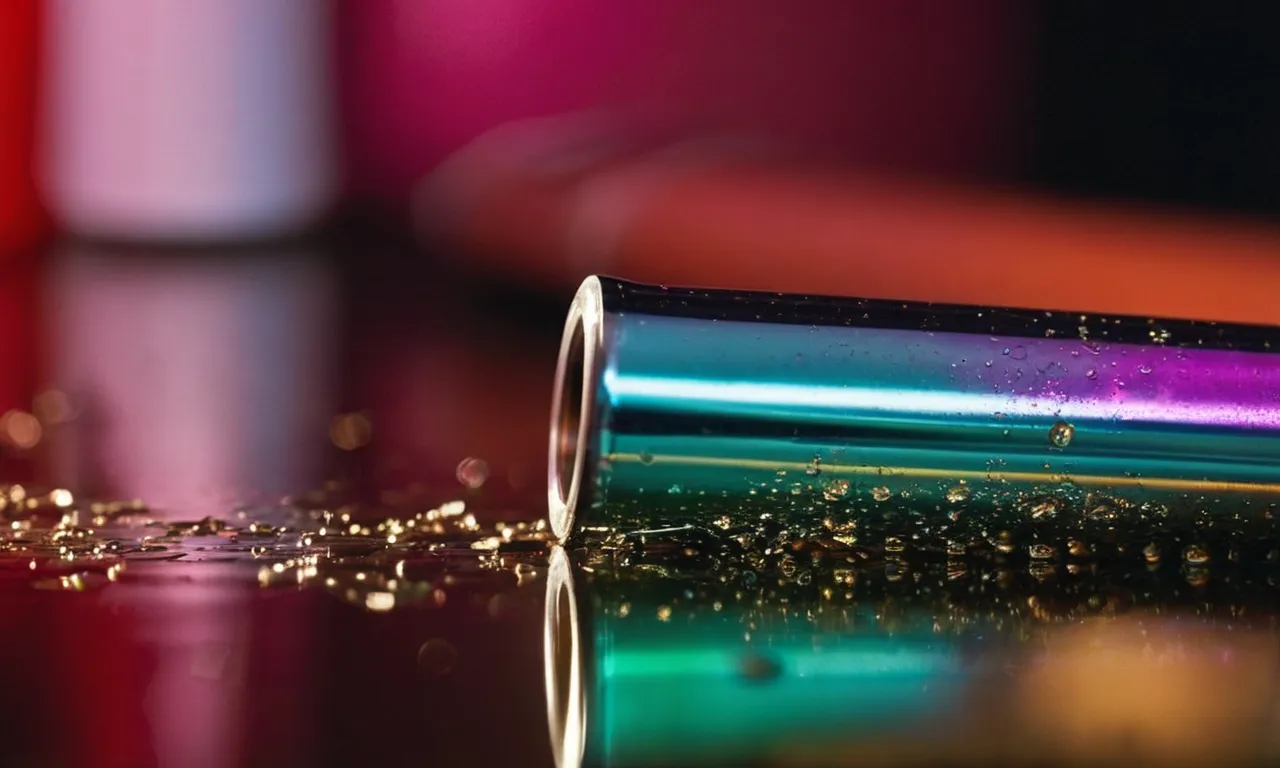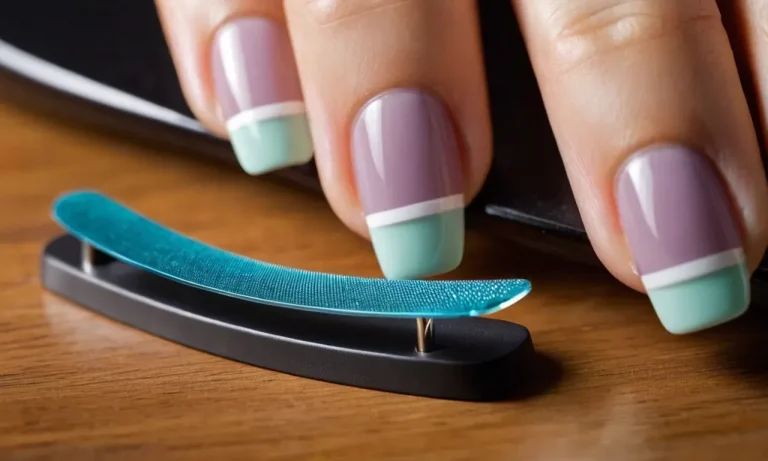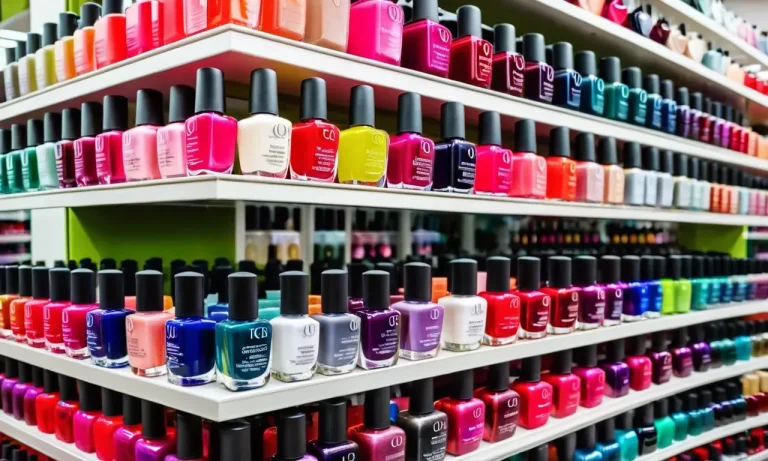Can You Use Nail Polish Remover To Clean A Pipe?
Cleaning pipes can be a messy and smelly chore. When clogged drains or dirty pipe buildup strikes, many people search their homes for anything that might dissolve the gunk. Nail polish remover often comes up as a potential cleaning solution for pipes, but is it really effective or safe?
If you’re short on time, here’s a quick answer: Using nail polish remover is not recommended for cleaning pipes. Most nail polish removers contain harsh chemicals like acetone that can damage pipes.
In this comprehensive guide, we’ll cover whether nail polish remover can effectively remove buildup in pipes, what ingredients are used in most nail polish removers, how those ingredients impact different pipe materials, plus alternative methods you can use to safely clean clogged and dirty pipes.
Analyzing the Effectiveness of Nail Polish Remover on Pipes
Can Nail Polish Remover Actually Clean Pipes?
Using nail polish remover to clean pipes may seem like an unusual DIY hack, but some people swear by it. Nail polish remover contains acetone, a powerful solvent that can dissolve substances like nail polish, super glue, and theoretically, buildup inside pipes.
However, there are some limitations to consider before pouring nail polish remover down your drains.
The main active ingredient in nail polish remover is acetone, which is an effective solvent and cleansing agent. When applied to pipes, acetone can help break down and dissolve gunk, grease, soap scum, and other debris. This may help clear minor clogs and keep pipes free-flowing.
Some DIYers claim that periodically flushing small amounts of nail polish remover down their sinks helps keep drains clear and prevent clogs. The strong acetone odor may also help deodorize smelly drains. However, results will vary depending on the type and extent of buildup inside the pipes.
Limitations of Using Nail Polish Remover on Pipes
While nail polish remover may have some benefits for cleaning pipes, there are some important limitations to consider:
- It can be harsh on certain pipe materials like PVC plastic, and may cause cracks or damage over time.
- It only dissolves certain types of organic buildup – it won’t clear mineral deposits or corrosion.
- It may not fully dissolve thick or excessive grease clogs.
- The fumes can be toxic if inhaled in large quantities.
Therefore, nail polish remover should only be used occasionally on very minor clogs. It likely won’t clear a fully blocked drain or sewer line. Extensive buildup will require a drain snake or professional drain cleaning.
You should also never mix nail polish remover with other drain cleaners, as chemical reactions can occur. Only pour small amounts down the drain followed by lots of water. Never use it on clogged toilets.
For routine drain maintenance, hot water, baking soda, vinegar or enzyme drain cleaners are safer options. But for removing nail polish from pipes, go back to removing it from nails!
Understanding Nail Polish Remover Ingredients and How They Impact Pipes
Common Chemicals Found in Nail Polish Removers
Nail polish removers typically contain a few key ingredients that help break down and dissolve the nail polish. The most common chemicals found in nail polish removers include:
- Acetone – The main active ingredient in most nail polish removers that helps break down the nail polish. It’s a harsh solvent that can dry out skin and pipes.
- Ethyl acetate – Another solvent that helps dissolve nail polish. Less drying than acetone but can still negatively impact pipes.
- Almond oil – Added to help counter the drying effects of the solvents. Generally safe for pipes.
- Vitamin E – Also added as a moisturizer and likely pipe-safe.
- Fragrance – Small amounts added for scent. Could contain chemicals harmful to pipes.
So ingredients like acetone and ethyl acetate are the biggest causes for concern when it comes to using nail polish remover to clean pipes. The oils and vitamins are likely fine, but fragrances can be problematic depending on what specific chemicals they contain.
How These Chemicals Interact with Different Pipe Materials
When nail polish remover comes into contact with pipes, the acetone and other solvents can be problematic. Here’s how they typically interact with different pipe materials:
Plastic Pipes:
The acetone can cause cracking or warping in PVC, CPVC, PEX and other plastic pipes. It breaks down the compounds that make up these pipes, weakening their structural integrity. This can lead to leaks or even pipe bursts over time.
Metal Pipes:
Like plastic, acetone can break down the protective coatings on metal pipes like copper or galvanized steel. This leaves them vulnerable to corrosion, scale buildup, and contamination issues. The insides of pipes may become etched or roughened over time as well.
Ceramic Pipes:
Ceramic pipes like those found in some older homes may experience staining, etching, or other surface damage when exposed to acetone long-term. If the glazing cracks, moisture can then penetrate the ceramic itself, leading to structural issues.
So in most cases, exposing pipes to nail polish remover is not recommended. Acetone in particular is reactive with many pipe materials. An occasional small exposure may not cause major issues right away, but over longer periods it can degrade pipes.
It’s best to use safer cleaning alternatives whenever possible.
Safer Methods for Cleaning Clogged and Dirty Pipes
Using Baking Soda and Vinegar
One of the safest and most effective ways to clean clogged pipes is by using a combination of baking soda and vinegar. The chemical reaction between the acidic vinegar and alkaline baking soda creates bubbles and fizz that help dislodge gunk, grease, and debris that has built up in pipes.
To use this method, pour 1 cup of baking soda down the clogged drain followed by 1 cup of vinegar. Let the mixture sit for 5-10 minutes before rinsing with hot water. Repeat as needed until the clog is cleared.
The best part is that these are common household items found in most pantries and totally safe for pipes.
Trying an Enzyme Drain Cleaner
Enzyme drain cleaners are a great eco-friendly option for clearing clogs. Rather than harsh chemicals, they use natural enzymes and bacteria to break down organic material like food, grease, hair, and soap scum that often blocks drains.
Simply pour the enzymatic cleaner down the drain as directed and let it work overnight. The enzymes digest the gunk so it can easily wash away with water. Enzyme cleaners are safe for all pipe materials like PVC, copper, and steel. Just check the product label to ensure it’s safe for septic systems.
Some popular brands are Green Gobbler, Drainbo and Bio-Clean.
Calling a Professional Plumber
For serious clogs or plumbing issues, it’s best to call a professional plumber. They have the proper equipment and expertise to diagnose problems and clean pipes safely. Plumbers can use high-pressure water jets, snaking tools and commercial drain cleaners more potent than household products.
They can also inspect pipes with cameras to pinpoint stubborn clogs and identify any damaged areas needing repair. While a plumber costs more upfront, they can prevent damage from DIY mistakes that could require expensive pipe replacements down the road.
Be sure to get referrals and only hire licensed, bonded and insured plumbers for best results.
Conclusion
While using nail polish remover to clean pipes may seem like a convenient DIY method, it carries significant risks. The harsh chemicals found in most nail polish removers can actually damage pipe materials and plumbing fixtures.
Instead of pouring risky chemicals down your drains, use safer homemade options like baking soda and vinegar when tackling minor clogs. For more stubborn pipe buildup or serious blockages, call a professional plumber to properly clear your pipes while avoiding damage.







